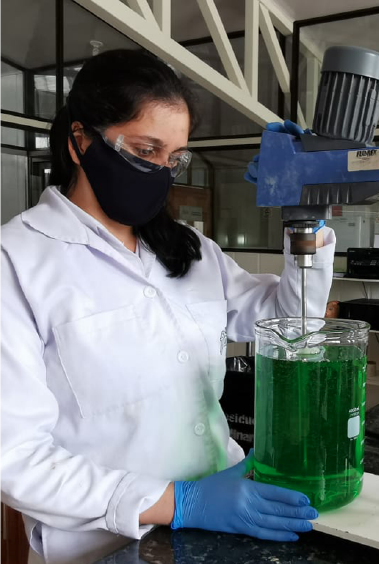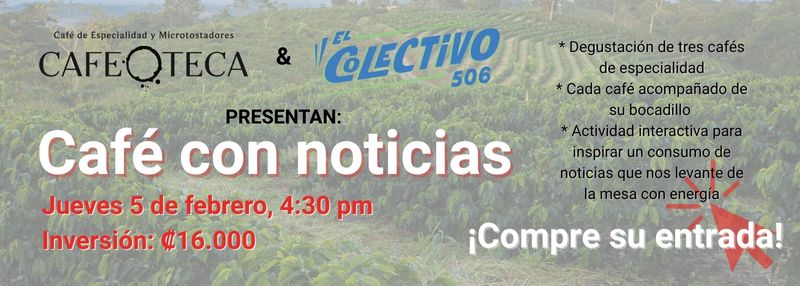When environmental lawyer and Grupo Florex CEO Silvia Chaves heard about Certified B Corporations some seven years ago, she was intrigued.
“The comprehensive nature of what they proposed resonated with us, because they weren’t talking only about environmental issues—though they included it, which is super important for us—but also about social and financial issues,” says the co-founder of the well-known Costa Rican manufacturer of cleaning products. “We were very inspired by the story and seeing what kind of companies were entering the movement.”
According to Silvia, the evaluation process required for B Corp Certification is very useful because it begins with a self-assessment process that allows companies to understand what they are doing well and how they can improve.
In 2017, when Grupo Florex was certified as a B Corp, the achievement represented the culmination of eight months of work. However, Silvia explains that this work built upon processes that were well underway, since the company has implemented environmental management systems from day one. Florex measures the impact not only of its production, but also of the way its products are used.
Still, the process was not easy.

“The other side of the coin is that [the evaluation] was hard, because it was so complete, so comprehensive, and because it was a tool that was designed for companies and organizations in the United States,” says Silvia.
One of the most complex challenges for Grupo Florex and the other pioneering Costa Rican companies that joined the global B Corp movement, according to Silvia, was figuring out how to match the information generated by Costa Rican businesses and public entities to what the international assessment tool asks for. This has required Florex to leave out some of its processes and achievements because they do not have evidence that are accepted by the regional counterpart for the B Lab, the global organization that supervises B Certification.
Grupo Florex has already gone through the evaluation twice. The minimum score for certification is 80. In the first evaluation, Florex obtained a score of 86.8; in the most recent process, in 2022, the company obtained an 89.6. Silvia says that the process has been worthwhile and that maintaining the certification is a priority “for the time being.” HOwever, she adds that unless processes are implemented to further adapt the tool to the reality of countries such as Costa Rica, Grupo Florex is beginning to question its permanence in the company.
“We are already worrying about the investment that must be made to maintain this,” says Silvia. However, she repeats over and over that up to this point, B Certification has been worth it.
“[The tool is] very comprehensive. It ticks all the boxes, and allows for self-assessment, which makes you stronger,” she says. “You learn a lot as a company, as an organization.”

The B Assessment’s environmental impact area
The B Lab defines the environmental section of the assessment as an evaluation of “a company’s overall environmental management practices as well as its impact on the air, climate, water, land, and biodiversity.” Of all the five areas of impact that are evaluated, the environmental section is the one assigned the greatest value, with 45 points out of the highest possible score of 140—a significantly higher value than impact areas such as customers (five points), and slightly higher than community (40) and workers (40).

The questions companies must answer in this section of the assessment depend on each business’s characteristics.
At the top of the section, the company indicates where its production takes place (in a building or through remote work) and if the “products/services or processes are structured to restore or preserve the environment” in some way, such as “products and services that create renewable energy, reduce consumption or waste, conserve land or wildlife, provide less toxic alternatives to the market, or educate people about environmental problems.”
These answers determine which questions the company must answer in the next four segments: environmental management (10 points), impact on air and climate (15 points), impact on water (8 points), and impact on earth and life (12 points).
The tool aims to grasp all the details, right down to “the direct impact of a company’s operations and, when applicable, its supply chain and distribution channels.”

In the environmental management segment, the primary goal is to find out whether companies implement policies and practices in their facilities that promote the responsible use of resources, such as the use of electricity, water, or waste management. It also looks to determine whether they promote this culture among their workers.
For the air and climate section, the evaluation seeks to understand which energy sources the company uses. “Monitor, record, or report” are common requests throughout the B Assessment; in this section, the most important thing is to understand what type of electricity and hydrocarbons (for mobility and production) the company uses and how it is using them. For example, do they use energy-efficient equipment, or promote the use of public transport?
When it comes to water, the assessment asks how water use is monitored and recorded by the company, and whether water efficiency measures are implemented, such as low-flow toilets, rainwater collection, or the use of gray water for irrigation.
To measure the impact on land and biodiversity, the tool focuses on the company’s waste management—for example, its implementation of policies for recycling and waste reduction.
For certification, companies must prepare documentation of water consumption, electricity consumption, and other metrics, such as the weight of garbage produced.
Adapting the environmental impact area to Costa Rica
The B Assessment provides companies with benchmarks that allow them to understand how their peers have measured up—not only by type of business or size, but also by geographic location.
In Environment—the most heavily weighted of the B Assessment’s five impact areas—Costa Rica as a country presents relatively low scores. Most of its 12 B Corps scored above 25%, but many failed to reach even 50% of the score.
Why are those numbers so low, especially in a country that is known worldwide for its work in the conservation, preservation and renewal of the environment?
In the case of Florex, Silvia suggests that the problem might start with a lack of alignment of the evaluation with companies outside the United States, or at least in our country.
“We are not speaking the same language,” she says, adding that this mismatch is the most significant limitation that Grupo Florex has noted among all the positive impacts and benefits that the B Movement brings to the world in general, and to her company.
“There are adjustments that have not been made; it requests information that is not possible in countries like ours; there are a lot of concepts that apply in other countries, like the United States… very different scientific terminology, eand nvironmental impacts measured in a very different way,” Silvia says, listing some of the weaknesses that Grupo Florex has identified in the certification process. She says Florex has noticed these particularly in the environmental area, where, in the opinion of the Florex team, they should have higher scores.
“There was an [option] on the last assessment to present an innovative project in environmental matters. We presented what we considered to be very innovative, and the counterpart did not agree. Biodiversity impact data had to be presented—data that [in Costa Rica] only a laboratory or academia could take, not a company. Our company was measuring impact data, but not at that level,” says Silvia.
“That led me to say that, in environmental matters, this was not helping us,” adds Silvia. However, she says that the tool does allow Florex to show how they have maintained and improved on their baseline of action, and on their long-standing business objectives.
“With management systems, saving water, waste management, energy saving—there we present everything, but we still stay tas the base of the tool,” she concludes. Grupo Florex’s environmental score: 25 points out of 40.

Grupo Florex is already working on its recertification process and says it is encountering the same difficulties once more.
“We have a lot more [that we could] present, but we won’t be able to,” says Silvia. “We should have higher scores for what we are doing, but there is no way that the tool will accept us—and there is generally no interlocutor to talk to.”
But the work goes on.
“We continue with our processes, and above all, we start looking for different kinds of data to see if we can raise [the score]”, says Silvia at another point in the conversation. “And if that’s the effect on us—that we have fully defined where we want to improve, what our impact is, where we are making progress… now imagine [the potential impact on] someone who doesn’t have that kind of clarity.”
We are diving deep into the five impact areas of the B Assessment through the experiences of each of the Certified B Corporations that are supporting our March edition, “Measuring Up.” Read more about all of our sponsoring B Corporations here.






